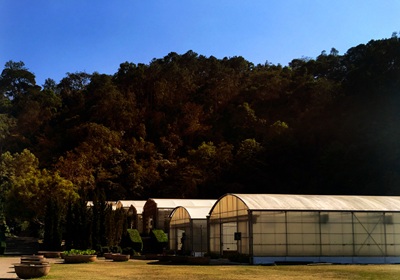Whether you’re a homeowner looking for extra storage space, a farmer needing a durable machinery shed, or a business owner planning a custom steel structure — finding the right shed in Western Australia can make all the difference. With its harsh sun, strong winds, and coastal air, WA demands sheds that are tough, reliable, and built for local conditions.
This complete guide walks you through everything you need to know — from types of sheds and building materials to permits, installation tips, and maintenance advice. Let’s dive in.
Why Sheds Matter in Western Australia
Sheds in WA aren’t just storage structures — they’re investments in lifestyle, property value, and productivity. With vast rural land and booming residential growth, sheds are being used for everything from workshops and garages to horse stables, carports, and even man caves.
Top reasons to invest in a shed:
- Extra space for tools, vehicles, or equipment
- Protection from WA’s intense UV exposure
- Adds value and functionality to your property
- Customizable to suit industrial, commercial, or residential use
- Can double as a workspace or entertainment area
Types of Sheds You’ll Find in WA
When choosing a shed, think about your purpose, location, and local council requirements. Here are the most popular shed types across Western Australia:
| Type of Shed | Ideal For | Common Features |
| Residential Sheds | Backyard storage, home workshops | Compact size, aesthetic design |
| Rural & Farm Sheds | Equipment, hay, livestock | Large open spans, high clearance |
| Industrial Sheds | Warehousing, manufacturing | Steel frame, concrete slab, roller doors |
| Garage Sheds | Cars, boats, bikes | Lockable doors, insulation options |
| Custom Sheds | Multi-purpose use | Designed to exact specifications |
Pro Tip: When choosing a shed, always consider the orientation and drainage slope of your site — they impact both longevity and usability.
Choosing the Right Material for Your Shed
Western Australia’s climate can be unforgiving, so material choice is crucial. Here’s a breakdown:
1. Steel Sheds
- Pros: Long lifespan, low maintenance, termite-resistant
- Cons: Can be prone to corrosion near coastal areas (use galvanised or Colorbond® steel)
- Best For: Industrial, rural, or large residential projects
2. Timber Sheds
- Pros: Natural look, great for gardens
- Cons: Needs regular treatment for termites and rot
- Best For: Decorative or small backyard sheds
3. Colorbond® Sheds
- Pros: Weather-resistant, modern color range, energy efficient
- Cons: Higher upfront cost
- Best For: Homeowners wanting style and durability
Understanding Council Permits and Regulations
Before installing your shed, always check with your local WA council for building permit requirements.
Typical regulations include:
- Maximum shed height (usually 2.4m–3.6m for residential zones)
- Distance from property boundaries
- Structural engineering compliance
- Stormwater management
Checklist for council approval:
✅ Site plan and shed design
✅ Engineering certification
✅ Drainage plan
✅ Building application form
Some smaller sheds (under 10m²) might not require a permit — but always confirm with your council before starting.
Installation: DIY or Professional Help?
Depending on your skill level and shed size, you can either assemble it yourself or hire professionals.
DIY Installation Pros:
- Cost-effective
- Great for smaller sheds
- Flexible schedule
DIY Cons:
- Physically demanding
- Mistakes can lead to leaks or instability
Professional Installation Pros:
- Quick, safe, and compliant
- Warranty protection
- Ideal for large or custom builds
If you’re investing in a big structure or using it commercially, professional installation is highly recommended for safety and compliance.
Shed Maintenance Tips for WA Conditions
WA’s combination of salt air, dust, and UV rays means regular shed care is essential.
Maintenance checklist:
- ✅ Wash your shed’s exterior every 3–6 months
- ✅ Inspect and clean gutters and downpipes
- ✅ Check for corrosion on metal joints
- ✅ Repaint or recoat Colorbond® when needed
- ✅ Keep the base clear of vegetation and debris
Proper maintenance not only extends your shed’s life but also keeps it looking fresh and functional for years.
Enhancing Your Shed for Comfort and Efficiency
Want to take your shed to the next level? Consider these upgrades:
- Insulation: Keeps interior cooler during summer
- Skylights or Windows: Natural lighting reduces power use
- Ventilation: Prevents condensation buildup
- Security Locks: Protects tools and valuables
- Solar Panels: Perfect for off-grid setups in rural WA
Where to Buy Quality Sheds in WA
When it comes to Sheds WA, look for trusted local manufacturers who understand the unique climate and construction standards of the region.
One of the most reliable providers is Western Sheds — known for delivering high-quality, custom-designed steel sheds tailored to local needs. They offer everything from residential garages to large commercial buildings, with full installation support and engineering compliance.
FAQs About Sheds in Western Australia
Do I need a permit to build a shed in WA?
In most cases, yes — especially for sheds over 10m² or above 2.4m high. Always check with your local council.
What’s the best material for coastal areas?
Galvanized or Colorbond® steel is ideal as it resists rust and corrosion from salt air.
Can I install solar panels on my shed?
Absolutely. Many WA homeowners install solar setups on large roof spaces to power workshops or farm equipment.
How long does a steel shed last?
With proper care, a quality steel shed can last 25–40 years or more.
What’s the average cost of a shed in WA?
Prices vary based on size, material, and features — typically starting from around $2,000 for small backyard sheds to $50,000+ for industrial builds.
Conclusion
A shed isn’t just another structure — it’s a long-term investment in your property’s function, value, and durability. Whether you’re in Perth, Geraldton, or Albany, choosing the right design, materials, and installer makes all the difference.













